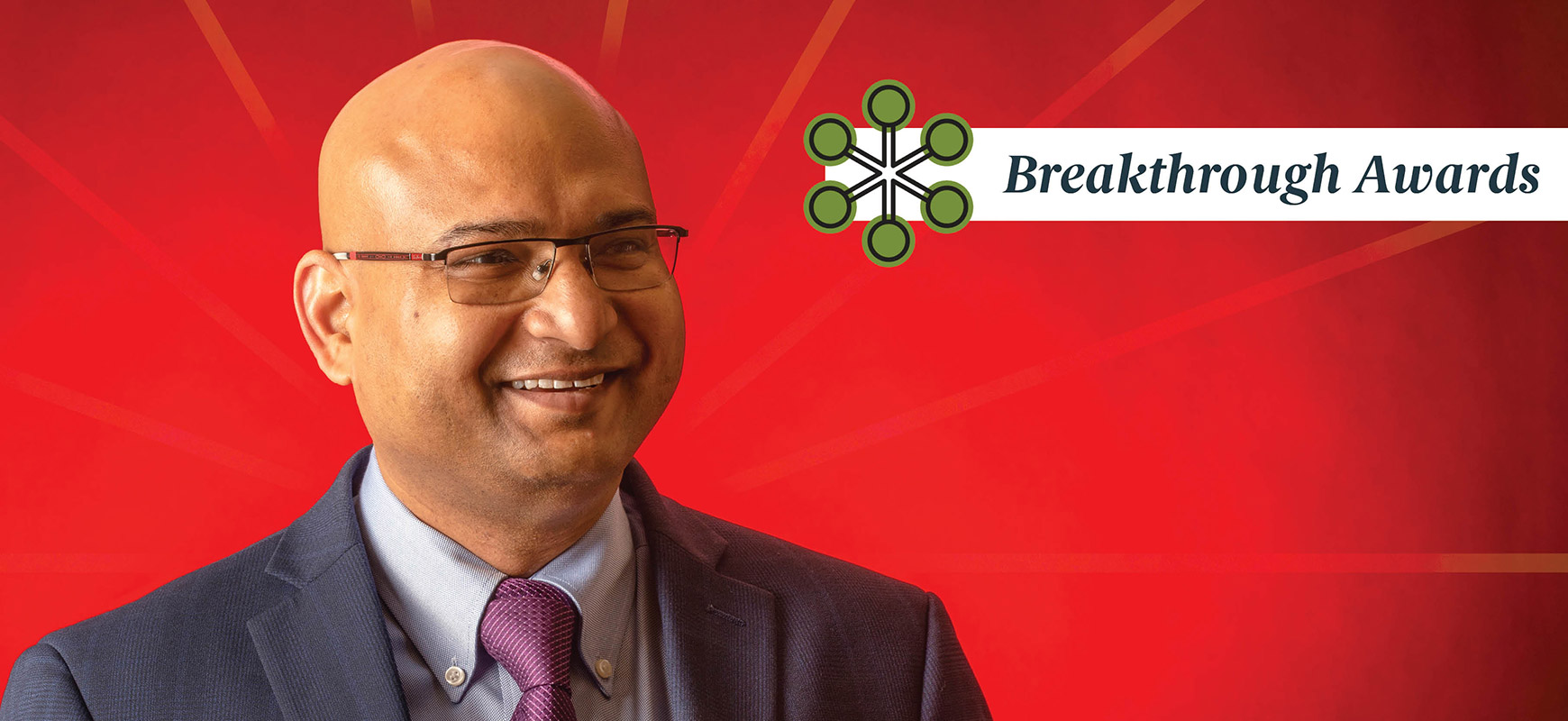
Material world
Using ultrasonic acoustic waves to detect material damage and prevent catastrophic failure
Posted on: June 14, 2019; Updated on: June 14, 2019
By Chris Horn, chorn@mailbox.sc.edu, 803-777-3687
You’ve heard of dog whisperers and horse whisperers. Meet Sourav Banerjee, the material whisperer.
Banerjee, an associate professor of mechanical engineering, has developed a patented technology that uses ultrasonic acoustic waves and sensors to diagnose the condition of metal and composite materials in aerospace vehicles and concrete in structures including bridges. Acoustic waves are transmitted through the material, and sensors gather unique vibrational signatures that are analyzed to detect cracks or stress points.
We want to ‘talk’ with this material using ultrasound acoustical waves. I want to be able to determine if it’s going to fail even before any symptoms of unwellness have appeared.
Sourav Banerjee, engineering
“With sensors, you can diagnose material breakdown long before it results in a catastrophic failure,” Banerjee says. “The traditional approach of detecting a crack, then repairing it, works for civil structures like bridges. But for aircraft structure we don’t have that luxury of time. Once there is a crack, it’s already too late.”
Banerjee’s new quest is to further refine his ultrasonic wave technology to detect material breakdown before it’s visible. He points to composite material now used in many airplanes and spacecraft that appears undamaged even after sustaining a physical blow. The material is perhaps degraded, like an invisible bruise, he says, and it develops a “memory” of the stresses it has endured.
“I’m looking into a more physics-based understanding of these materials,” Banerjee says. “We want to ‘talk’ with this material using ultrasound acoustical waves. I want to be able to determine if it’s going to fail even before any symptoms of unwellness have appeared.
“There’s no way to diagnose material memory so far, be we have found a unique feature in the linear and nonlinear ultrasonic wave — we call it the coda or tail wave — that can perhaps tell us what memory has been collecting in a material.”
Banerjee has worked on material health research with most of the world’s leading aircraft manufacturers and is currently involved in a NASA-funded project that involves analyzing materials that will be used for the next Mars mission.
On another front, Banerjee is exploring how to harvest energy from large structures by tapping into their ever-present vibrations. Think of a busy bridge with traffic rumbling across it, he says. “Why can’t we put some type of harvester in place with smart materials to capture the energy and store it in a battery?” This isn’t an idle dream: Bannerjee has already applied for a patent for the energy-harvesting plan.
Extending his acoustical energy research in a biomedical direction, Banerjee envisions developing artificial ears that can sense sound in ranges below and above mere human capability, a bio mimic that could make Banerjee the ultimate “whisperer” in sensor technology.